
PUMPA - SMART LEARNING
எங்கள் ஆசிரியர்களுடன் 1-ஆன்-1 ஆலோசனை நேரத்தைப் பெறுங்கள். டாப்பர் ஆவதற்கு நாங்கள் பயிற்சி அளிப்போம்
Book Free DemoWhat is physical property?
A physical property is a property of matter that can be observed and measured without changing the sample's chemical identity.
Physical Properties of Iron:
(a). Iron is a lustrous (shiny and bright appearance) metal with greyish white colour. (You can see building construction)
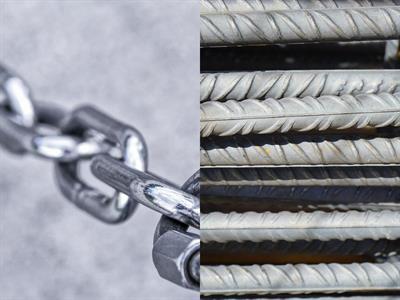
Shiny greyish white iron
(b). Iron has a high tensile strength (of iron is 60,000 psi), malleability and ductility.
Tensile strength is described as the ability of a material to resist a force that tends to pull it apart.
Malleable is drawn into a thin wire. Ductility is capable of being shaped.
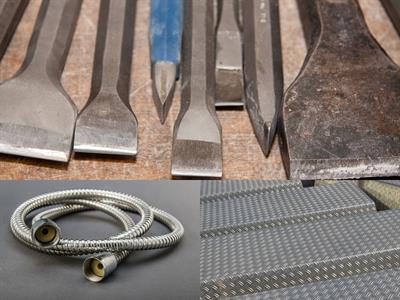
Hard iron wires and sheets, etc.,
(c). Iron can be magnetized.
Magnetization is the process of developing the properties of a magnet in a magnetic object. A magnetic object such as a piece of iron can be magnetized by contact with electricity or a magnet.
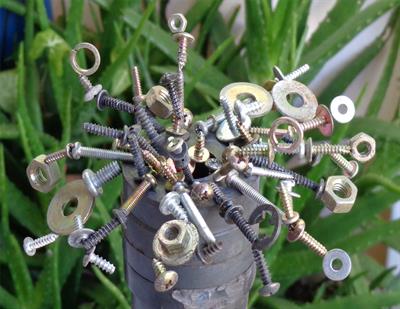
Magnetized iron
What is a chemical property?
A chemical property is a property of a substance that can be seen when it undergoes a chemical reaction.
Chemical Properties of Iron:
(i). Reaction with air or oxygen:
Iron forms magnetic oxide only when heated in the air.
3Fe + 2O_2 → Fe_3O_4 (black)
(ii). Reaction with moist air or Rusting:
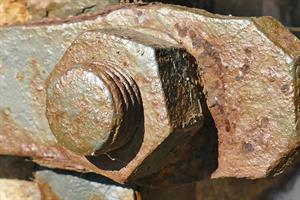
Rust formation on an iron bolt
When iron is exposed to moist air, it forms a brown hydrated ferric oxide layer on its surface. This compound is known as rust, and the phenomenon of the formation of rust is known as rusting.
4Fe + 3O_2 + xH_2O → 2Fe_2O_3.xH_2O (rust)
(iii). Reaction with steam:
When steam is passed over a red hot iron, the magnetic oxide is formed.
3Fe + 4H_2O (steam) → Fe_3O_4 + 4H_2↑
(iv). Reaction with chlorine:
Iron reacts with chlorine to form ferric chloride.
2Fe + 3Cl_2 → 2FeCl_3 (ferric chloride)
(v). Reaction with acids:
Iron liberates H_2 gas with dilute HCl and H_2SO_4.
Fe + 2HCl → FeCl_2 + H_2↑
Fe + H_2SO_4 → FeSO_4 + H_2↑
In cold conditions, dilute HNO_3 produces ferrous nitrate and ammonium nitrate.
4Fe + 10HNO_3 → 4Fe(NO_3)_2 + NH_4NO_3 + 3H_2O
With concentrated sulfuric acid, iron forms ferric sulfate and liberates SO_2.
2Fe + 6H_2SO_4 → Fe_2(SO_4)_3 + 3SO_2 + 6H_2O
When iron is dipped in concentrated nitric acid, it becomes chemically passive or inert due to forming a layer of iron oxide (Fe_3O_4) on its surface.
Types and Uses of Iron:
Pig iron (iron-containing 2.0% - 4.5% of carbon):
(a). Pig iron is used to make pipes, stoves, radiators, railings, utility covers, and drain pipes.
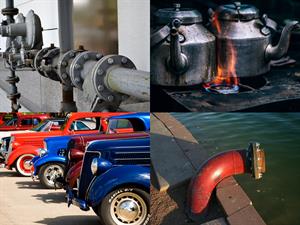
Pig ion usages
Steel (iron-containing 0.25% - 2.0% of carbon):
(b). Steel is used to construct buildings, machinery, transmission cables, television towers, and the manufacture of alloys.

Steel usages
Wrought iron (iron-containing < 0.25% of carbon):
(c). Wrought iron is used to make springs, anchors, and electromagnets.
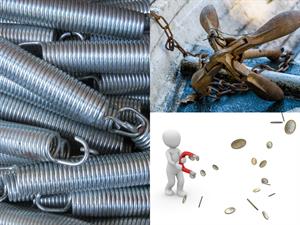
Wrought iron usages